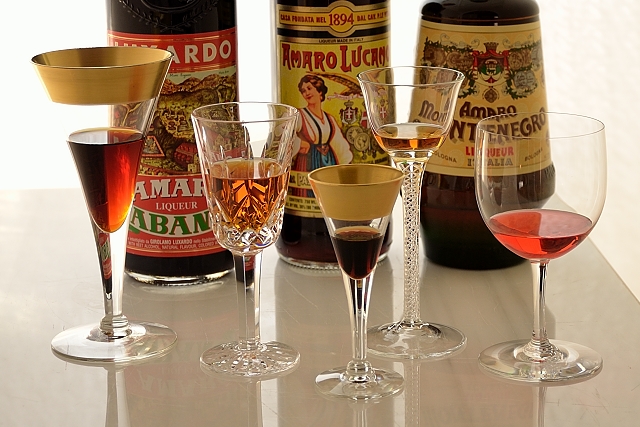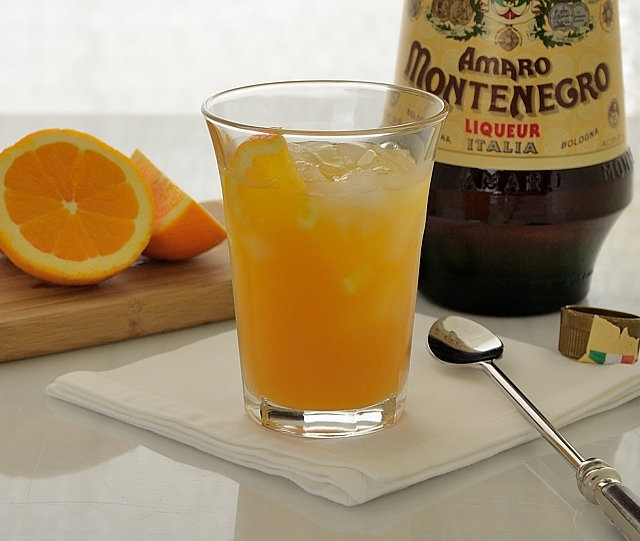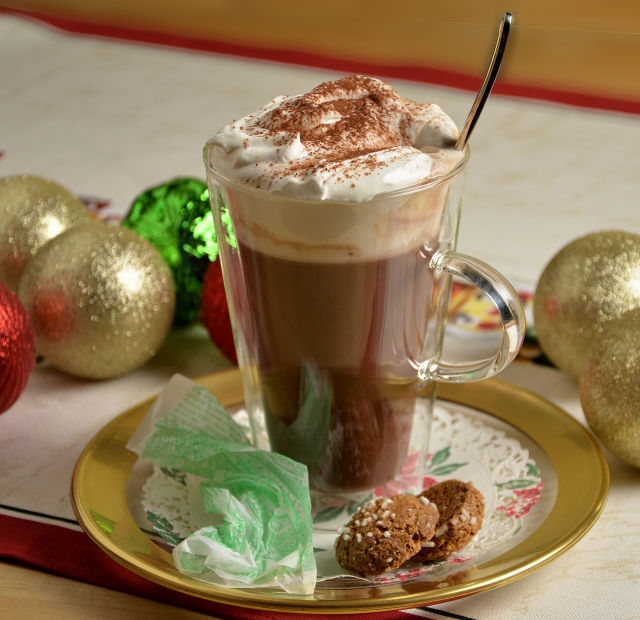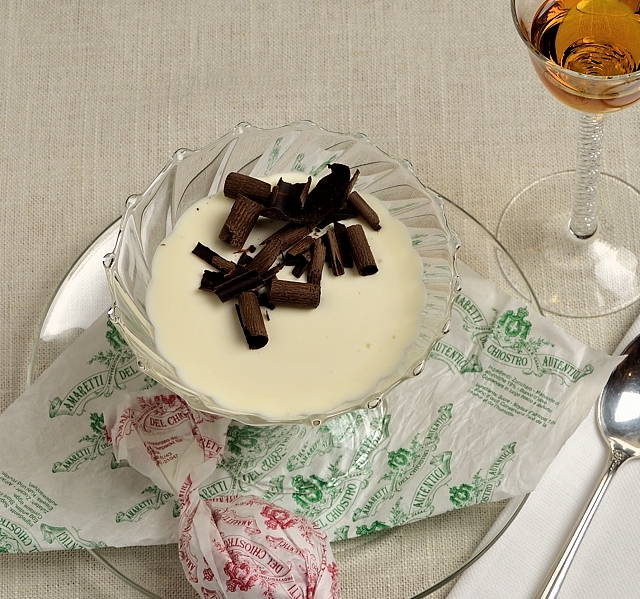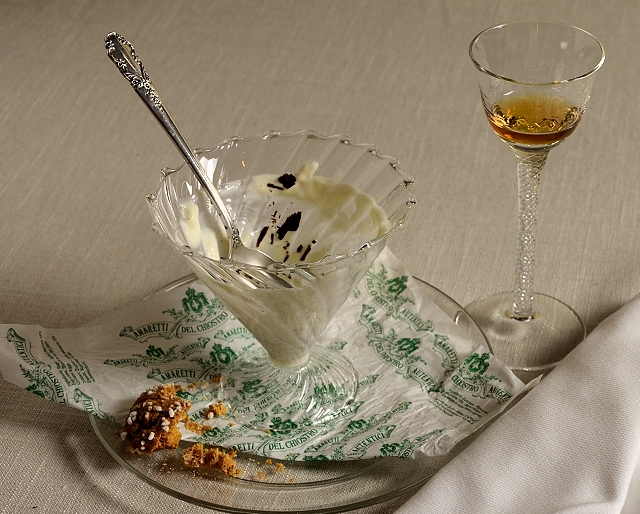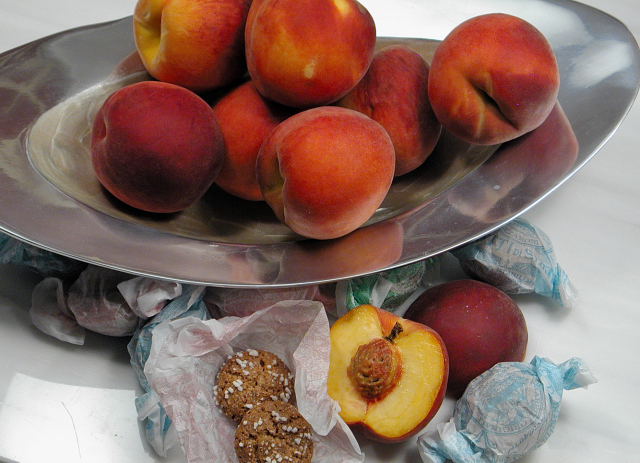Topic Index
The font size for a topic word is sized by the number of articles that reference that topic. The more articles the bigger the font.
Click on a word to search for posts with that topic. This page will reload with the search results.
‘Tis the season to overindulge or pazza per amaro
To know life one must taste the bitter and the sweet. – Italian proverb
Holiday Season is upon us, and along with the warmth, joy and feelings of brotherly love come huge feasts, and with the feasts, overindulgence. The Italians know how to cure that feeling of having overdone it at the table, and that cure comes in a bottle filled with liquors known as amari (singular, amaro). An essential part of the Italian gustatory experience, these eupeptics have yet to catch on in America. Amaro means bitter, and is not to be confused with Amaretto, the little bitter almond liqueur, nor with Amarone, the magnificent red wine from Italy’s Veneto region. No, amari are in a class by themselves. A large class of liquor numbering in the hundreds, there are even subsets divided by style. Amaro’s origins date back to at least 300 B.C. Originally tonics or elixirs, by medieval times they were integral to alchemists in their attempts to produce gold. It was a no go for the gold, but the elixirs, with their restorative nature and curative powers remain with us to this day. The recipes are always secret, proprietary and closely held by the Italian producers. As digestivi they are traditionally served neat (undiluted, at room temperature), or gently heated on occasion, in the cold winter months. These remarkably complex libations stimulate the appetite and promote the production of digestive acids and enzymes; as the Italians say, they open up the stomach – not exactly dinner table conversation, but digestion is a very big deal to the Italians.
I have already introduced you to Cocchi Americano, Aperol and Campari, all liquors with a distinctly bitter edge. But now we are moving up to the bitter big leagues, and like I said, just in time. Amari are distilled from neutral spirits or wine, even grappa, macerated on an array of ingredients – everything from citrus peel, to the roots of Alpine Yellow Gentian and the bark of the Cinchona tree. Also used are herbs, such as lemon balm and rosemary, spices such as cinnamon and cardamom and even artichokes. Yes, artichokes. Stroll with me into the world of amaro.
My beginning with amaro was less than auspicious. Much less. I was just a little kid, and we were at a big family weekend dinner. After dinner, with everyone well sated, and settling quietly back, Uncle Arunze brought out a bottle filled with brown liquid. He held it up and gestured, offering it to anyone who wished to imbibe. No one moved. No one spoke, lest gesture or utterance be misinterpreted. No one but me, the inquisitive little kid. The adults smiled, and Uncle Arunze poured the tiniest bit of the syrupy brown liquid into a small glass. I swallowed it. All at once. What a jolt. Inauspicious alright. Everyone had quite a laugh at my expense. The bitter alcoholic kick almost knocked me out of my chair. The intensely sugary grasp of the American sweet tooth is not to be underestimated, thus for many these bitter libations can be a very hard sell. Love of amari is learned and cultivated. These are full-bodied creations with flavor nuances that would make a wine nerd wax poetic.
Most range in price from about twenty to thirty dollars, although some such as Amaro Nonino command even higher prices. Many of the bottles and labels are works of art themselves, sleek creations with beautiful gilt script, colorful design, and labels that harken back to produce crates of old.
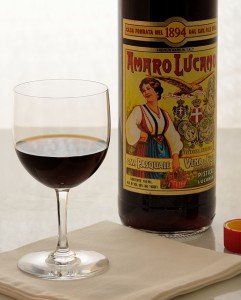
From Basilicata (also known as Lucania) comes Amaro Lucano. The brightly festive label features a pacchiana in traditional dress (farmer in the Campanian dialect) with her basket of herbs and the motto lavoro e onesta (work and honesty). Made from 37 herbs, in the tasting are notes of ginger, licorice and cinnamon. Drink this neat or with sparkling water as an aperitivo. And yes, you can even pour a bit over ice cream.
Amaro Montenegro is the sweetest and perhaps the most accessible of the three shown here with its spice and notes of citrus peel, clove, tea and herbs. Its name honors Italy’s second Queen, Helena of Montenegro. Developed in Bologna in 1885 and popular ever since, it is one of Italy’s best selling amari. Drink it neat as a digestivo, or mixed with sparkling water or ginger ale for a delightful aperitivo.
Amaro Abano, my current favorite, is made with herbs that grow wild in the volcanic hills south of Padova. Sipped slowly after a grand meal, she reveals herself. Initially sweet, followed by the warmth of cinnamon and black pepper, she fills your mouth with cardamom, bitter orange peel and the most remarkable tobacco finish. This is one complex creation. And as with Amaro Montenegro, mixed with sparkling water or ginger ale, this makes one fine aperitivo.
Somehow, when consumed neat on the novitiate’s empty stomach, the bitterness of these elixirs predominates, diminishing the drinking experience. I suggest you taste them on a full stomach. Additionally, their alcoholic content ranges from 16% to 40% and higher, and is nothing to sneeze at. As a beginning taster, with your first sip you may discern only bitter, or distinctly separate bitter and sweet. Sip again and the amaro will seduce you as you begin to taste the multiple part harmony of spice, herbs and fruit. The bitterness will remain a constant, taking its part as a pedal point.
When next you entertain guests with a grand and leisurely meal, consider a selection of amari to close your evening. Bring a few bottles to the table, and sip slowly to savor the delights within. Chances are it will be a new experience for many of your guests, and perhaps you will make a few converts. Bring a bottle of sparkling water along, or a pot of warm water, just in case your guests wish to ease the transition from newbie to convert. Watch as after just a bit, they push the water aside. Slowly sipping these complex libations will quickly become a treasured part of your meals – a time to sit back, reflect on the joy around you and count your blessings while enjoying the good will of your company. Enjoy the wonder that is the art of the distiller of amaro.
Next time you need some of the hair of the dog that bit you, try this instead of a Bloody Mary.
Amaro Montenegro and Fresh Orange Juice
serves 1
1 ounce Amaro Montenegro
2 ounces freshly squeezed orange juice
orange slice for garnish
Pour Amaro Montenegro over crushed ice. Add orange juice and stir with a bar spoon. Garnish with an orange slice. Serve at once.
And for the James Bond fans, just imagine ordering this one – “1 measure of Amaro Montenegro, 2 of fresh orange juice, over crushed ice. Then add a thin slice of orange.”
Bevi responsabilmente!
Note: You can click on any picture for a larger image, and to see a slide show!
I have no affiliation with any product, manufacturer, or site mentioned in this article.
Mocha Espresso with Amaretto
Are you looking for a grown-up hot chocolate? Look no farther. This combination of cocoa, stovetop espresso and Amaretto topped with whipped cream will satisfy. The espresso lends its own unique coffee flavor to this libation. but if you do not have access to an espresso maker, stovetop or mechanical, you can use freshly brewed double strength coffee. As for the Amaretto, make it Luxardo, the most glorious of all. Whip your cream ever so softly, just to thicken it, and don’t omit the 1/8 teaspoon almond extract. It may not sound like much, but it works magic on the whipped cream.
Mocha Espresso with Amaretto
serves 2
2 cups whole milk
2 tablespoons granulated sugar
7 tablespoons Dutch process cocoa, such as Pernigotti or Penzeys High Fat
1cup brewed espresso
1/3 cup Amaretto
1 teaspoon vanilla extract
cocoa for dusting drinks
Whipped Cream
1 cup heavy cream
1 tablespoon granulated sugar
1 teaspoon vanilla
1/8 teaspoon almond extract
Make the whipped cream. Pour heavy cream into medium bowl. Add sugar and extracts. Beat until thickened. Set aside.
Pour milk into saucepan. Add sugar and cocoa, whisking to combine. Heat to scalding, whisking occasionally. Remove from heat and add hot espresso, Amaretto and vanilla extract. Pour into serving glasses, top generously with whipped cream and a dusting of cocoa. Serve at once.
Buon natale!
I have no affiliation with any product, manufacturer, or site mentioned in this article.
Panna Cotta all’Amaretto
Another in The Panna Cotta Diaries
Well, I am back to The Panna Cotta Diaries. I was in the mood. Comfort food. Easy comfort food. For me, that’s Panna Cotta. I decided to use Amaretto, and not just any Amaretto – Luxardo Amaretto di Saschira. If you have never tasted this brand, then you have never tasted Amaretto, the “little bitter” liqueur.

Luxardo uses the famous almonds from Avola in the province of Siracusa in the south of Sicily. Real almonds. Some say really the best almonds. Not all brands use almonds, much less the magnificent ones from Avola. Some use lesser quality nuts, peach pits or synthetic flavorings. I mention all this because until I tasted Luxardo, I did not care for Amaretto very much at all. If you think Amaretto is not for you, give the Luxardo a try. I bet that just as I did, you will change your mind.
The liqueur is a gorgeous clear amber. Open this sleek, slender bottle, and smell the heady scent of the finest marzipan. It is not as sweet as other brands, and the almond taste opens up as the liqueur wraps your mouth in a delicate blanket of almond. This is one luxurious liqueur, and it imparts the most extraordinary burnt sugar and almond flavor to this dessert.
Amaretto Panna Cotta
makes 6 1/2 cup servings
This Panna Cotta is just in time for elegant winter time dinner parties. I make it with a full 1/4 cup of Amaretto along with almond and vanilla extracts. Don’t skimp on the quality of liqueur. With this much Amaretto, you must use high quality spirits. Go for the good stuff, such as Luxardo. Ditto for the almond extract and vanilla extracts – use a fine brand such as Nielsen-Massey or Sonoma Syrup Co.
I tried several amounts of gelatin with this one. I started with 2 1/4 teaspoons, and the set was not firm enough. I upped it right to 3 teaspoons, and it was much too firm – a nerf ball comes to mind. I backed off to 2 ½ teaspoons – it was just a shade too tight, finally settling on a scant 2 ½ teaspoons. Remember though, the set on Panna Cotta is very much a personal choice. So feel free to change the amount up or down. but just remember that you will not need to change it very much. Unless you want a nerf ball, that is. For a photo essay on how to make Panna Cotta and information on how to treat gelatin, see my post on Espresso Panna Cotta.
1 1/2 cups heavy cream
1 1/4 cups whole milk, divided
1/4 cup Amaretto
1/4 cup granulated sugar
scant 2 1/2 teaspoons powdered gelatin
1/2 teaspoon almond extract
1/4 teaspoon vanilla extract
chocolate curls to garnish
Pour 1/4 cup milk in shallow bowl. Sprinkle gelatin over milk and soften five minutes. Be sure all the gelatin comes in contact with the milk – otherwise it will not soften properly.
Pour cream, remaining 1 cup milk and sugar in medium saucepan. Stir to combine. Over medium flame, heat to scalding. Do not let mixture boil.
Remove from heat, add softened gelatin, stirring to combine thoroughly. Continue stirring until gelatin has dissolved. The mixture should be quite smooth.
Strain mixture into clean bowl. Add Amaretto and extracts and combine thoroughly.
Set bowl over an ice bath. Stir frequently to promote even cooling until mixture develops the consistency of high-fat heavy cream.
Pour into serving glasses. Cover with plastic and refrigerate 2 hours or overnight.
Garnish with bittersweet chocolate curls for service.
A note: I like to cool the Panna Cotta until it thickens somewhat. That way when I move it from my counter to the refrigerator, it does not shift in the serving glass and I get a perfectly even line of Panna Cotta in the glass. Do avoid the pitfall of letting it get too thick. You will wind up with an uneven surface. I know. I know. Picky, picky.
Note: You can click on any picture for a larger image, and to see a slide show!
I have no affiliation with any product, manufacturer, or site mentioned in this article.
Pesche Ripiene – Stuffed Peaches
The Italians have a way with peaches. They eat them out of hand. They put them in wine. And they fill them with Amaretti cookies and bake them. Oh, what a dessert. Peaches were introduced to the Italians by the Persians in the first century of the Common Era. In fact, let’s set the record straight right here. No, Titus Pullo did not avail himself of peaches from Cicero’s garden before assassinating the great lawyer and orator. There were no peaches to be had, unless at that point he had been in Greece. I, as much as any fan of HBO’s series Rome, hated to see the error. History calls out to be put right. The Keeper of the Flame is pleased to oblige.
Read the remainder of this entry »

